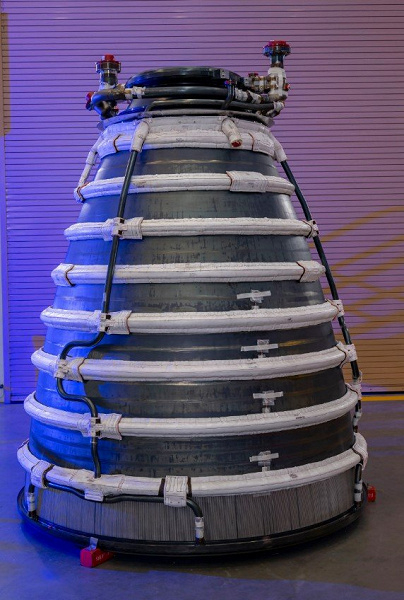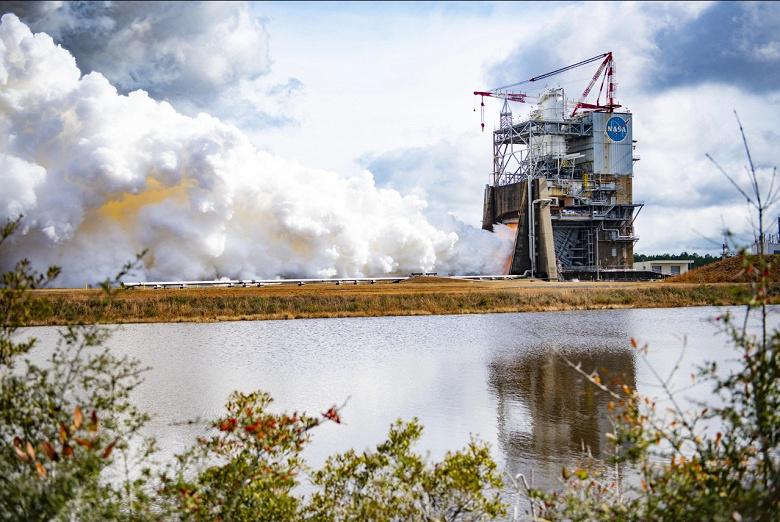The middle of the series of certification tests of RS-25
engines has been passed
NASA has successfully completed the sixth of twelve planned tests of the RS-25 engines required to certify the SLS (Space Launch System) lunar rocket. The test was conducted by engineers at the Stennis Space Center on January 27 using a full-fledged test launcher.
Building on previous testing conducted at NASA, the current series of tests is designed to certify production of the new RS-25 engines, which are being supplied by Aerojet Rocketdyne's lead contractor, L3 Harris Technologies. These new engines will eventually be used on NASA's SLS rocket as part of Artemis missions to the Moon and beyond, starting with Artemis V.
Engineers were able to fire up the RS-25 engine long enough to launch the SLS — almost eight and a half minutes or 500 seconds. During testing, engine power varied from 80% to 113%. The new RS-25 engines will be able to operate at maximum power of up to 111% to provide additional thrust for SLS launch. Carrying out tests with power up to 113% guarantees safe operation.

The next step in the series of tests, engineers will install a new certification nozzle on the engine to provide additional data on engine performance during the next run. This installation will be completed next month, after which testing will continue at Stennis with six additional test runs through March.
For each Artemis mission, the SLS lunar rocket will use four RS-25 engines, as well as a pair of solid rocket boosters, to provide a total thrust of more than 8.8 million pounds (approximately 4 million kilograms) at takeoff . The Saturn V rocket used to carry the crew of the Apollo missions to the Moon had a thrust of approximately 7.5 million pounds (about 3.4 million kilograms). Thus, the SLS rocket's thrust significantly exceeds that of the Saturn V rocket, making it more powerful and capable of more complex missions to the Moon and beyond.
The Artemis missions are part of NASA's broader campaign to lay the foundation for long-term exploration on the Moon, as well as preparations for expeditions to Mars.

